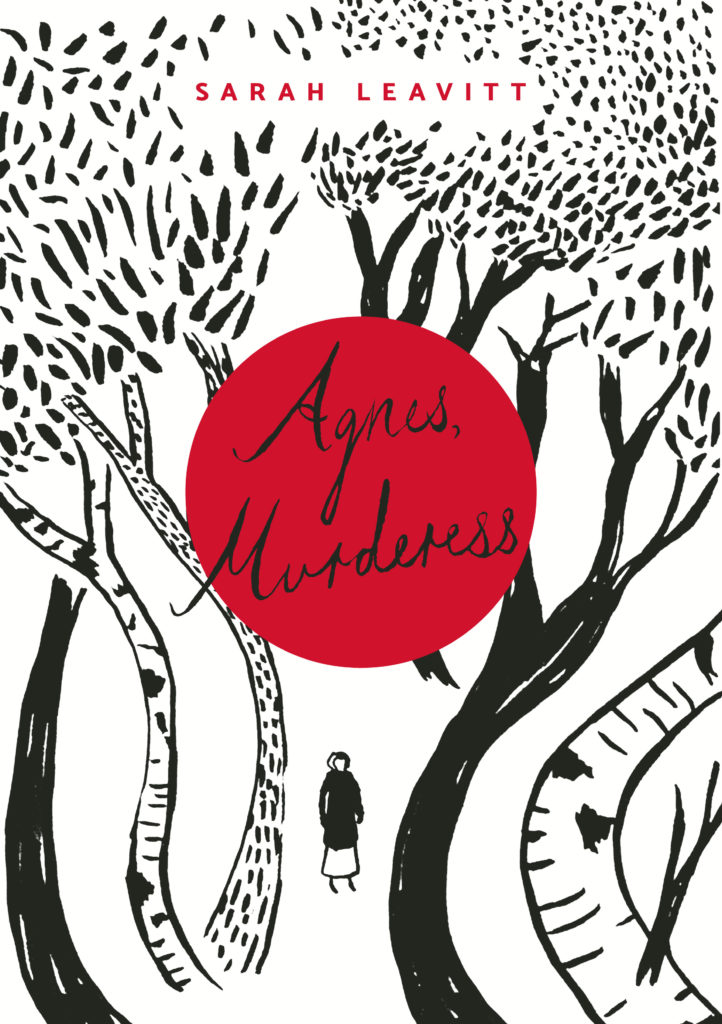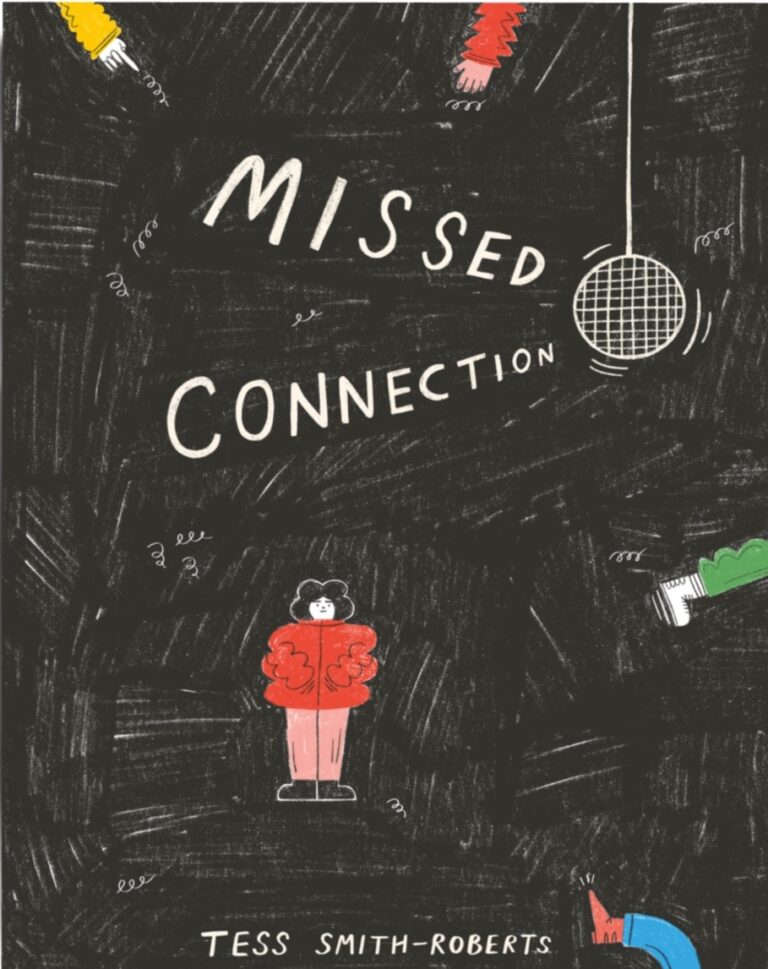The cover of Niki Smith’s new middle-grades graphic novel, The Deep & Dark Blue, doesn’t do what’s inside any favors. You can’t tell from looking at a picture of it online, but it has a shiny gloss coating on it that, combined with the type size on the flaps being way too big, makes it feel like Smith is new to comics. She’s not, although she is new to making work for this age group, being better known for her work for The Nib, Oh Joy Sex Toy and other, more adult-leaning publications. The interior design is fine, including the matt-coated paper-over-board design of the book itself, but the first impression makes the book feel younger and less professional than it is. Little, Brown Young Readers doesn’t seem to have put out a ton of comics, so maybe they’re still learning. Or maybe this is what sells, whether or not I think it’s “classy.” The lettering of the title certainly reminds me of that on the cover of the edition of Robin McKinley’s fantasy novel Beauty, which I read probably 15 times as a teenager.
The short version of what this book is about is a power struggle in a kingdom run by nobles who share power with a woman-run religion based on spinning blue thread (which also has mystical powers). One noble jumps the line through some nefarious deeds. Young twins Hawke and Grayson, who are next in line to inherit the throne, flee and hide out as girls among the religious initiates. Hawke learns how to fight properly. Grayson discovers that she is really Grayce and would rather not return to her old life. She also learns to "spin the blue."
Here are some things Smith does right in this book:
- She keeps it to one book instead of automatically thinking about sales and manspreading it into a trilogy. Too many YA books try to make into two or three or more books what could easily be one. There's not a ton of plot here and that is a-okay.
- She is more interested in the discovery of one's true gender than in fighting sequences. Good for her! The fighting is pretty boring, even when it involves magic. Smith relies too much on sound effects jumping around the edges of her panels to create tension. The palace intrigue stuff is fine but not all that compelling. On the other hand, Grayce's face as she struggles with her new knowledge is touching and evocative.
- She plays around with page layout to create interesting compositions. Sometimes she does this too much. It can feel hyper. On the other hand, it's not boring, and she generally knows how to place things on a page so that they're readable.
- Her color palette, designed to highlight blue through its frequent absence, is pretty good. She doesn't try to put too many colors on the page, which makes her work more readable. She's clearly thought about color a good bit, and, indeed, this isn't her first time in this territory. I haven't read her earlier short comic Indigo, but it seems to have provided the spark for this one. Her website describes it: “It’s about blue dye, women’s craft, and a young trans girl yearning to be part of it.”
 Indigo itself is interesting stuff, a valued crop that shows the horrifying legacy of European colonization and slavery (it was a profitable thing to grow and beautiful, but the people forced to grow it endured inhuman conditions) but also was grown in Africa prior to European enslavement of Africans. It is labor intensive, fascinating, an echo of centuries of cruelty, and beautiful, all at the same time. The Deep and Dark Blue doesn't get into any of that, though. It's for kids. What it does do is use the historical importance of textiles (why do you think Sleeping Beauty pricks her finger on a spindle and Rumpelstiltskin can spin straw into gold? Textiles were the source of wealth and empire for centuries) to create background for the story. The echoes of fairy tales are helpful in other ways, too. Grayce is accepted in her new identity surprisingly easily. Is this implausible? Maybe. Is it a weakness in the story? Not necessarily. It makes for a less complex narrative, but if you’re trying to do your part to create a safe space in which young people can come out as who they truly are, you don’t really want to present that process in all its potential terror. If this is a fairy story, it can have a happy ending.
Indigo itself is interesting stuff, a valued crop that shows the horrifying legacy of European colonization and slavery (it was a profitable thing to grow and beautiful, but the people forced to grow it endured inhuman conditions) but also was grown in Africa prior to European enslavement of Africans. It is labor intensive, fascinating, an echo of centuries of cruelty, and beautiful, all at the same time. The Deep and Dark Blue doesn't get into any of that, though. It's for kids. What it does do is use the historical importance of textiles (why do you think Sleeping Beauty pricks her finger on a spindle and Rumpelstiltskin can spin straw into gold? Textiles were the source of wealth and empire for centuries) to create background for the story. The echoes of fairy tales are helpful in other ways, too. Grayce is accepted in her new identity surprisingly easily. Is this implausible? Maybe. Is it a weakness in the story? Not necessarily. It makes for a less complex narrative, but if you’re trying to do your part to create a safe space in which young people can come out as who they truly are, you don’t really want to present that process in all its potential terror. If this is a fairy story, it can have a happy ending.
 Smith's stuff feels a little digital in its cleanness and its desire to layer thing on thing on thing. Her twins could be more visually distinguishable from one another (one of them has slightly mussed hair, but I had trouble remembering which one). The magic she presents feels unclear (what does it do, exactly?). If you compare this book to Roxanne Moreil and Cyril Pedrosa's The Golden Age, book 1 of which will be out next month, which has a similar medieval setting and deliberately limited color palette and complex panel layout and even some gender issues at play, that one comes out considerably ahead, but it's also for grown-ups, not for kids. The Deep and Dark Blue doesn't transcend its audience, but it plays to it okay.
Smith's stuff feels a little digital in its cleanness and its desire to layer thing on thing on thing. Her twins could be more visually distinguishable from one another (one of them has slightly mussed hair, but I had trouble remembering which one). The magic she presents feels unclear (what does it do, exactly?). If you compare this book to Roxanne Moreil and Cyril Pedrosa's The Golden Age, book 1 of which will be out next month, which has a similar medieval setting and deliberately limited color palette and complex panel layout and even some gender issues at play, that one comes out considerably ahead, but it's also for grown-ups, not for kids. The Deep and Dark Blue doesn't transcend its audience, but it plays to it okay.







